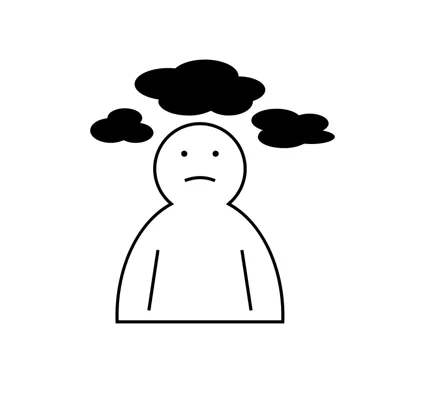Anxiety cannot be diagnosed through any medical examination or laboratory test. Instead, a doctor or mental health professional will make a diagnosis based on the answers given to a range of questions asked to the patient.
These questions will be based around their thoughts and feelings, and the symptoms they are suffering from. The doctor will also want to know the impact that the symptoms are having on the individual.
It is possible that in certain situations a medical test might be conducted to rule out other potential causes for symptoms.

What is Anxiety?
Anxiety: Anxiety in its simplest form is a feeling of being worried, afraid, or generally tense – usually in anticipation of an imminent event, or a predicted event. Anxiety is a perfectly natural emotion, with the vast majority of people going through periods of anxiety in their life. However, for some people anxiety is a constant problem which can be hugely detrimental to their quality of life. Anxiety can easily impact someone’s ability to live their life as they would hope to. Worrying can sometimes get out of control, making it near-impossible to live life in a healthy way. This typically leads to impairment in several different areas of life. The term ‘Anxiety’ can be applied to a host of mental health conditions, with Generalised Anxiety Disorder and Social Anxiety Disorder just two of many conditions.
Background
The symptoms of Anxiety and other mental illnesses are unique to each individual. Therefore, the doctor will need to ask several questions regarding the symptoms – including when they started.
Family history, drug or substance abuse and any possible causes will also need to be reviewed.
By getting a full picture of how an individual’s anxiety is affecting them and their life, a diagnosis can be made.
The most common anxiety disorder is Generalised Anxiety Disorder. However, there are a range of other types of anxiety too.
Diagnostic Criteria
In terms of the actual symptoms that need to be present for Anxiety to be diagnosed, each condition differs. In general, the patient will show some of, or all, of the below:
- Intense worries that affect the daily life of the person
- Diminished quality of life due to their anxiety
- Anxiety intervenes with normal functioning
- Having an uncontrollable feeling of worry
- These worries have been present in your life for at least 6 months
The above is a rather generic overview. For anxiety disorders like phobias, this will differ slightly.
Sometimes the Generalized Anxiety Disorder 7 (GAD-7) Test can be used to assist diagnosis. The GAD-7 is a self-reporting questionnaire which measures the severity of symptoms for Anxiety.
It is also worth noting that anxiety often runs alongside other mental health conditions, such as Depression.
Summary
It is important to seek treatment as soon as possible. The aim is always for a full recovery.
Getting a diagnosis is an important step in the road to recovery. From this point, treatment can take place.
See Also
- What Are The Different Types of Anxiety?
- What Are The Symptoms of Anxiety?
- What Are The Causes of Anxiety?
- How is Anxiety Diagnosed?
- How Can Anxiety Be Treated?
- What is the Prognosis for Anxiety?
- 10 Tips for Living With Anxiety
Disclaimer
This website should be used purely for informational purposes, and does not intend to, nor should it ever, be used as a replacement for professional medical advice.
We strive to keep all of our pages updated, and ensure that our website is full of factual and in-depth information. However, we encourage you to browse this website with care.
As a reminder, this website and all content within it cannot and should not replace the advice of a trained medical professional. You can read our full disclaimer at this link.
Helplines
If you are struggling with your mental health, help is available. With the right support and treatment, you can make a recovery. For information on helplines, or if you are in a state of crisis, please visit our crisis page by clicking on the relevant link for your geographical location (United Kingdom), (United States), (International). You can also see how to get mental health treatment and the process involved by clicking this link.































